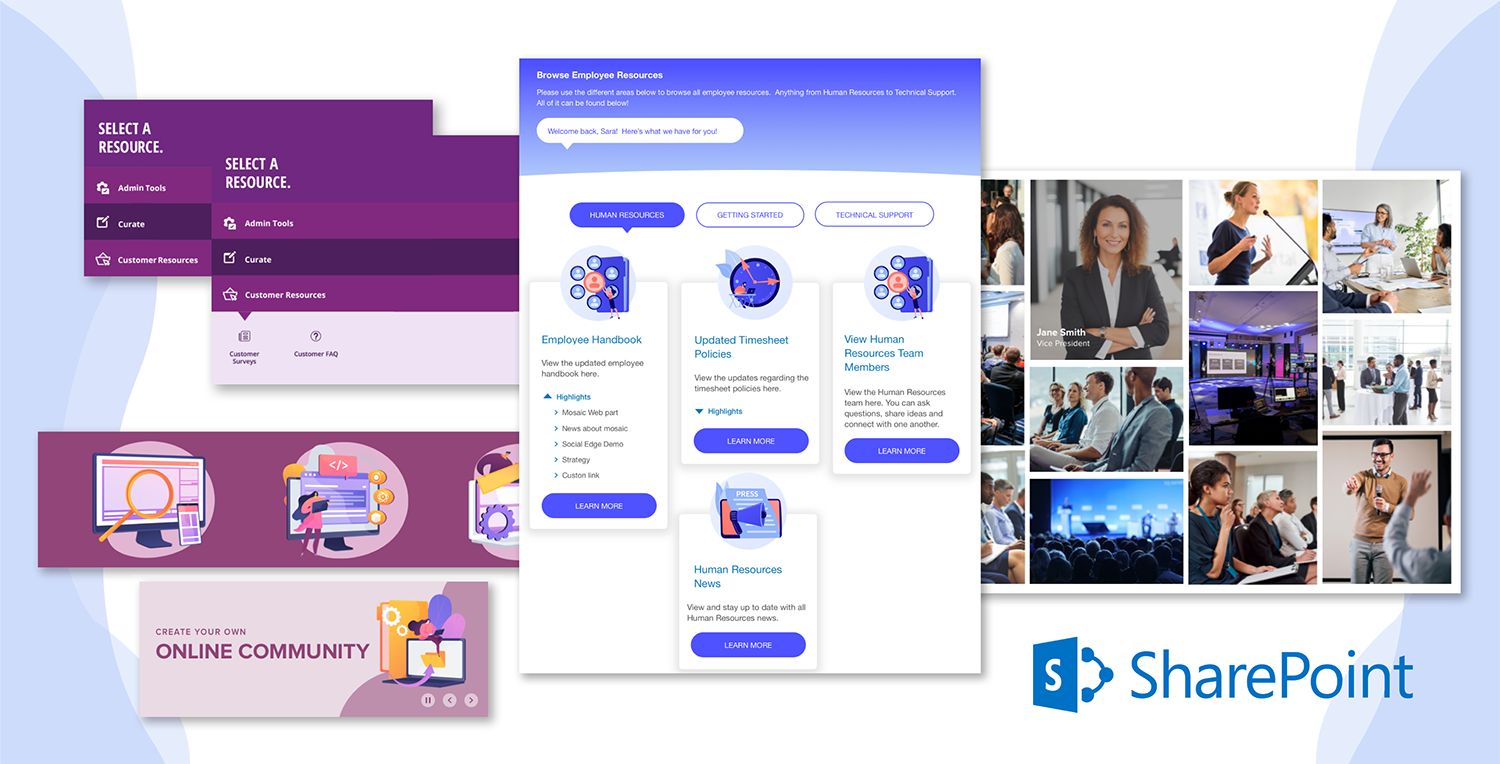Earlier this week, I had the opportunity to sit down with Daniel Mudgett, an online community and systems expert and 2017 Jive Digital Transformation Award Winner. Daniel specializes in helping organizations improve the way they collaborate and learn, and has led the implementation of multiple social collaboration and learning platforms.
In this interview, Daniel talks about his experience implementing and managing a successful collaborative social intranet.
Thanks for sitting down with me today Daniel! Can you tell me a little bit about yourself?
When I was young I wanted to be a deejay believe it or not… in college I fell in love with Physics and after graduating decided to leverage my programming skills. That decision started me on the path of learning and growing into a set of digital transformation oriented roles, and to implementing and managing communities, collaboration and learning systems and processes.
How did you first get involved in running a community on the Jive platform?
I had been running the learning and technical communications organizations as well as our intranet. At the time, we used Google Sites as our intranet and open knowledge sharing platform. After several years we decided we needed a stronger, more capable platform. We wanted to focus on three main overarching themes: engagement, collaboration, and innovation. Our goal was to bring people together and make it truly a social platform.
When you first began working on your community implementation, were there specific use cases you focused on developing?
We did focus on a set of core use cases, including a central communication channel or blog that was open to everyone in the company to post to, as well as storefronts for key departments like Human Resources, IT, Marketing, our software product teams, etc. We ran a contest to name our Jive community and the winning name was Medidata Express.
Prior to launch, did you have a group of early adopters or other community managers that you worked with to get feedback and refine your use cases and overall community experience?
We worked with Jive Professional Services and we did open up the system to a core set of use case owners to review our places, the design, layouts/features we had enabled in order to ensure we had the right information and content for Day 1. We also communicated with the entire company about the transition from Google Sites and our Knowledge Base and set up integrations to migrate pages into Jive, allowing users to flag articles that would be auto-migrated. Lastly, we had a set of early adopters that were active in our old intranet that we allowed early entry into Jive to get their feedback as well as let them help create social groups and content.
What was one of the biggest challenges in the rollout of your community?
We had a really aggressive timeline for our initial rollout. It was a true team effort… we planned just 3 months from the time we executed our license agreement to go live! Just as we were preparing to begin, we went to JiveWorld14 and learned that Jive Cloud was a better choice for us than a hosted environment (we wanted to stay at the forefront of new releases and more), so after JiveWorld we switched from hosted to Jive Cloud. We stuck to our scheduled rollout date - Super Bowl weekend - but it was a major stretch!
Tell me about a way you engaged your community that you think was especially successful.
A great one comes to mind - we had a variety of departments that all wanted to improve communication and participation in company events of all sorts. Some wanted to put video monitors in each office displaying upcoming events and others wanted to use posters and table tents, and (being a Google shop) company calendars with events were posted.
Key leaders and event managers from Marketing, Corporate Communications, Facilities Management, Human Resources Benefits, and of course my Community Management team, met and agreed to centralize all these distinct types of events into a Jive place called the Event Hub and do some special things to make them easy to view, search and navigate. Key Subject Matter Experts (SMEs) from each event area would own their event calendars, coordinate postings and centralize a truly wide array of events. This included everything from volunteer activities, like blood drives and the American Heart Association Walks we participated in, customer user group meetings, to other types of employee engagement events and corporate social responsibility related events, like our annual intern project showcase!
To power all of these events, we developed (with Social Edge’s design!) a custom Events Tile that was visual and smart. It was a wide tile that allowed users to easily and interactively filter the types of events they wanted to see on the home page based on event type or office location - and it was all powered by a simple standard tag taxonomy. Needless to say it was a huge success, and became a key destination and helped drive employee engagement!
Were there any limitations or challenges you needed to overcome prior to or immediately after launch?
Our first challenge immediately after launch was on the first Monday we were ‘live’ (right after Super Bowl Sunday!). The system was up and running and staff was logging in, checking it out, and engaging… so much so that we had FAR more usage and adoption than Jive or we anticipated! And then the platform started getting slow…. The cloud server resources needed to be radically increased to accommodate the load! The vendor quickly increased the resources and we were good to go, and from there we continued to see our usage go up and up! At the time it was not fun, but quickly we realized it was a great problem to have. Fortunately we never had that same problem in terms of overall server resources again.
For those who are in the process of launching a new community, what top tips or best practices would you recommend they consider during the process?
Really think about how you name things in the platform. Use names and navigation elements, menus, links, etc. that are clear, unambiguous. Avoid lingo and acronyms. You want to be sure that all of your users, old and new, can recognize the terminology you use and find what they are looking for - not just the people that are there at launch or in one geography/culture.
Another tip is that it’s worth starting with fresh content as much as you can. You will definitely have some key content that may need to be migrated over from your legacy platform. But to the extent that you can, be tough on people who just want to move large swaths of content over. Make sure it’s really worth the effort, as everyone in the new platform will have to separate the old and new.
Looking back, is there anything you would have changed or done differently?
When we went live we did not already have a full time, dedicated community manager resource in place. Myself, along with the other rollout team members, served as interim community managers, split across 3-4 people, for over 6 months post-launch. Plan on having a dedicated community manager hired before you begin your implementation so you have someone in the trenches with you the whole time!
Thanks again for your time Daniel! I'm sure other community managers will get a lot of value from the experiences you've shared with us. Stay tuned for future blog posts from Daniel and check him out on LinkedIn here!













